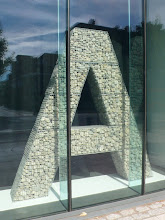New Basford is an area north of Nottingham city centre that was established through the burgeoning lace industry. It is an area that is predominantly filled with two up, two down terraces, some light industrial units (built following a ‘slum clearance’ programme) and a few remaining Victorian factory buildings. It is a place that one tends to pass through, rather than being a destination in itself—on face value it is a typical inner city area suffering from the usual problems of unemployment, graffiti and general deprivation.
I wanted to develop work that probed beneath the surface of New Basford, going beyond the seemingly identikit streets and houses, and attempting to represent a sense of place. My methodology was that of the anthropologist, seeking out signs and interventions of a low-tech, personal and vernacular nature. These were recorded and used to develop a series of maps charting non-traditional elements such as graffiti, decorative brick features and memories.


The maps (approx 900mm square) were produced on translucent stock that enabled two different maps to be overlaid and further conclusions drawn. Discoveries included the paths and territories of a teenage bully and a foot fetishist, the greater prevalence of graffiti on the sunny side of the street, and the trees planted in the grounds of the long since disappeared church yard.



A series of visual books were also developed that charted the graffiti and brick decoration by street, in alphabetical order. These, in the case of the graffiti, revealed which street was the most 'loved up', and which were the most threatening.


The project is featured in Visual Research: An Introduction to Research Methodologies in Graphic Design available here.
A paper looking specifically at the graffiti maps was presented at the fourth annual Friends of St Bride 2005 conference—Temporary Type—and can be found here.
Papers on this project were also presented at The 2005 Design History Conference, Locating Design, at London Met University, the 2005 RGS-IBG International Conference, London (in the Art and Belongings strand) and at the 2nd International Information Design Conference, 2005, Sao Paulo, Brazil. The graffiti paper has also been published in issue one of Ultrabold, The Friends of St Bride journal, the 2nd issue of Typotastic, an Australian graphic design journal and Cultural Geographies, Vol 14, issue 1.


No comments:
Post a Comment